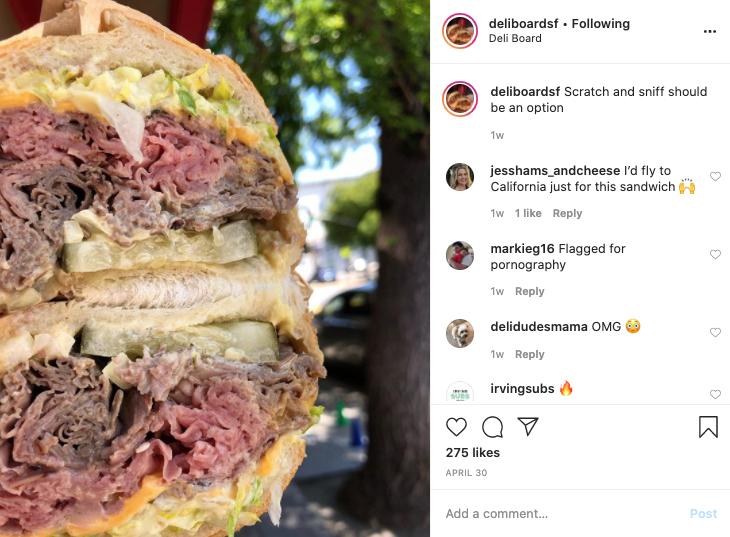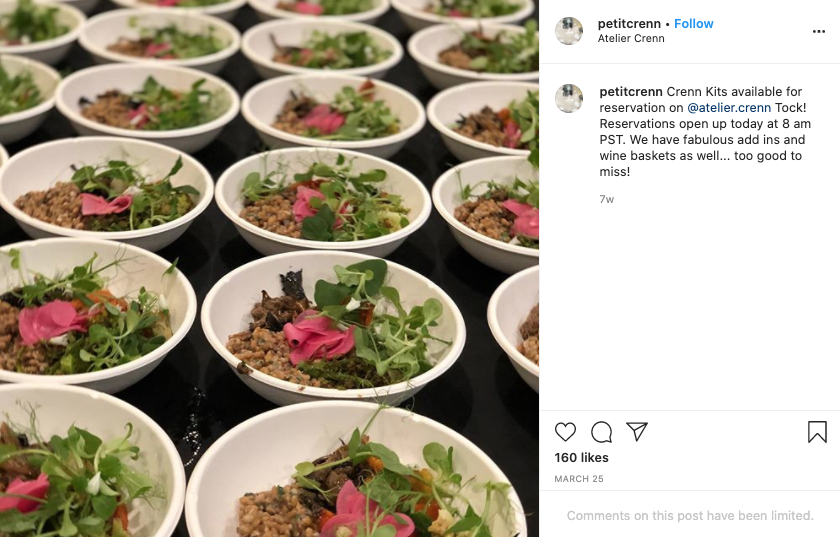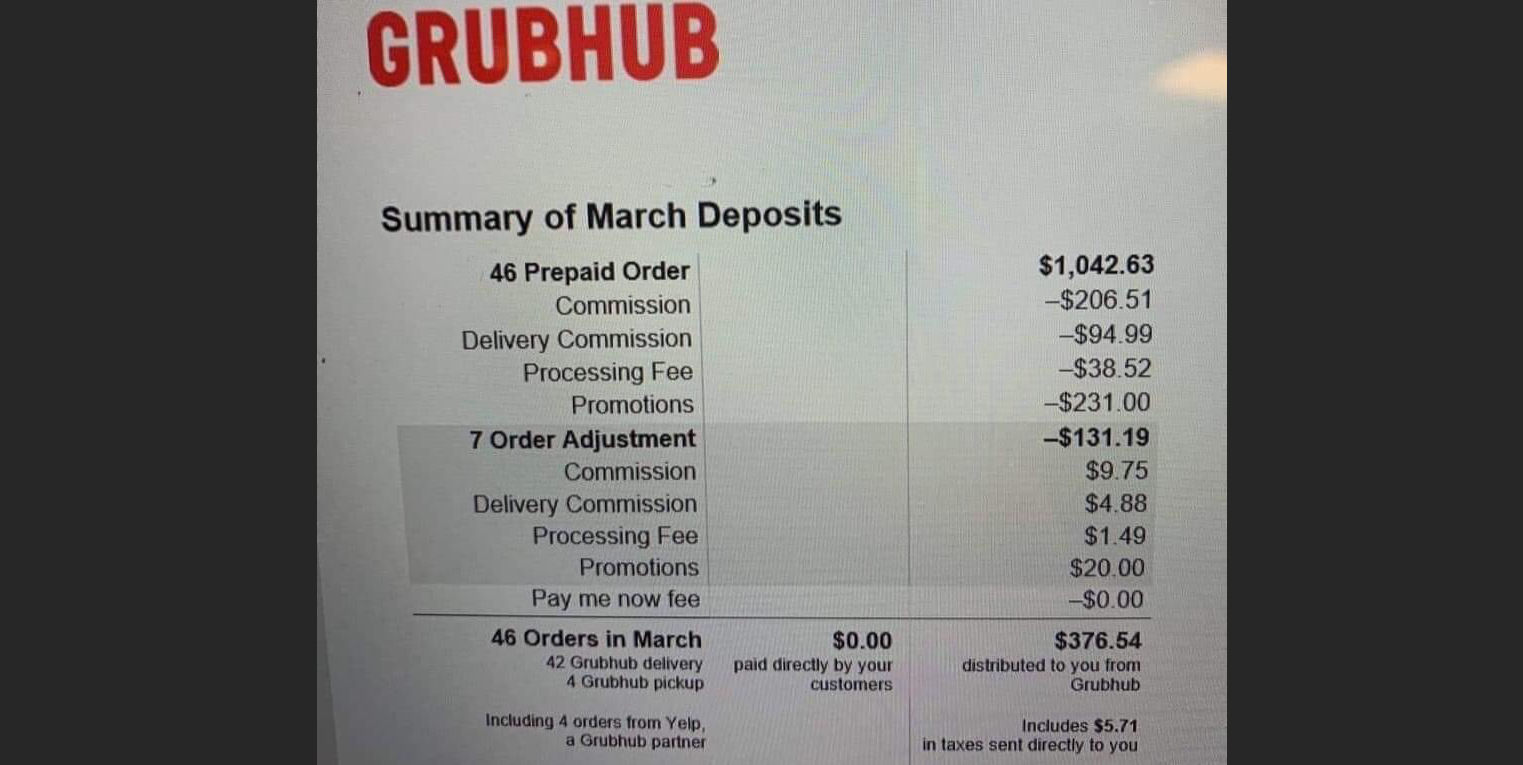COVID-19 Survival Tips for Restaurants
It’s no secret that restaurants are not faring well with shelter-in-place orders. Though the more I think about their circumstance, the more I’m convinced that restaurants should not only be able to survive — but perhaps should even thrive in this new environment if they can adapt to the new reality.
The New Reality
It’s important to realize that things will not be returning to normal for restaurants until there is confidence around the effectiveness of a vaccine. This could take 18-24 months, which is a lifetime for most restaurants — most won’t survive 3-6 months without regular patronage.
What we need to realize is that the current pandemic is the psychological equivalent of the 9/11 terrorist attacks - there is severe and permanent fear in society right now around public density - these fears are not going to go away anytime soon and they could persist for generations!
My 4 year old niece is already incredibly diligent about touching anything public, about maintaining 6-feet of social distancing. She will yell at anyone who comes to close or flee the immediate area if anyone sneezes or coughs. We don’t even know the type of lasting psychological effect this could have on an entire generation of children whose developmental psychology around disease is going to be imprinted with a once in a century pandemic.
We’ve all been on airplanes or in restaurants where someone is coughing incessantly. Now imagine that same situation today, everyone is likely to just leave the plane or restaurant, or advocate to staff that the person coughing needs to be removed!
Things will not be returning to “normal”. There is a “new normal” developing around consumer demand and habits that is going to reshape the way we eat, play and live.
So how can restaurants possibly survive this calamity? On the brightside, everybody needs to eat, and a large percentage of the population either prefers or is otherwise unable to cook their own meals. So a considerable part of the population is still likely to demand restaurants, but only if they’re able to adapt.
Current Restaurant Economics
Restaurant margins are razor thin. The average profit margin for a restaurant in the US is only 3-5%.
This pain is only compounded when a restaurant has to rely on 3rd parties to drive demand and fulfill payments and deliveries. Delivery services like Doordash, Grubhub and Uber eats take on average 15-30% of order value, sometimes even higher! In the screenshot above, you’ll see an example of a pizza restaurant in Chicago who did $1042 in order value, but received only $376 after delivery commissions, processing fees and promotions.
In addition to obliterating the restaurant’s bottom line, the pay & benefits for delivery workers at the major services is abysmal.
Assuming this is our new normal, how can we build a better remote workflow for restaurants?
1. Discovery: Create an Instagram Menu
First let’s talk about discovery. How could a restaurant build a cheap web presence as cheaply as possible and reach as large an audience as possible?
The most immediate opportunity would probably be to create an Instagram profile, and take a picture of each item on the menu. Boom, instant web presence and menu. Put the prices and ingredients description in the comments with a menu item ID.
Users can follow their favorite restaurants in their city, and restaurants can post mouth watering stories to drive demand for dishes.

2. Order via DM & Text / Pay via Venmo
Once the menu is up on instagram, let people order via direct message or via a phone number in the photo comment or in your bio. Add instructions to send orders via DM / text message that include the menu item #, delivery address, and venmo, paypal or square cash username. Let them know that the order won’t be prepared until payment is received.
3. Repurpose Waitstaff for Delivery
Since there’s no more waitstaff or bussing needed in the restaurant, this frees up considerable resources to fulfill orders and handle deliveries. Busboys or waitstaff can stage deliveries and help optimize routes and pack orders. There’s still probably going to be some waitstaff who lose their jobs, but many will be able to adapt to take the SMS orders, pack boxes, and transfer to delivery people.
Also - add a delivery fee! Most users are accustom to paying 10%++ in fees to grubhub/uber eats/doordash anyways. If they want delivery, you need to charge more.
4. No More Dine-in: Ditch Your Real Estate
Another benefit that every restaurant will have to consider, is to move facilities to a more favorable location that isn’t prime commercial space in a downtown area. This could save massive costs in rent and utilities.
Additionally, restaurants can save massively on the reduced overall footprint as there is not longer a need for dining areas and customer restrooms.
Restaurants could even leverage the new emergence of cloud kitchens where you can share facilities with other restaurants in a more traditional warehouse area. This provides economies of scale for expensive fixed equipment, fire suppression and HVAC systems that are usually handled individually by the restaurant.
This will likely involve breaking your lease - this is a very unfortunate circumstance, but sadly might be the reality of dine-in patronage is not returning to normal anytime soon.
Tell your landlord you need to break the lease and negotiate a termination fee if your contract doesn’t have one already - otherwise tell them you’re declaring bankruptcy if they don’t accept (which is sadly likely the reality if they don’t allow you to terminate the lease agreement.)
5. Leverage Pre-orders!
We’re already seeing restaurants leverage pre-ordering so they can better optimize the amount of staff & ingredients they need for a given night. Limiting the amount of orders one night might also get some latent demand for future nights, which further builds anticipation and can yield a positive marketing effect.
6. Only Your Best: Limited Menus are Your Friend
What dish do you do best? Keep it simple and focus on just a few of your top selling items. This helps you limit the amount of inventory you need to purchase, eliminates spoilage and significantly reduces preparation complexity.

7. Group Buys: Get Your Biggest Fans to Market For You
The concept of getting a large group of people to commit to purchasing a service in order to make it a reality is super powerful. If you’re having financial difficulty getting back into the game, setup a weekly kickstarter for your most popular dishes and get your following to send word to all their friends that they have to try out your new popup. This method helps ensure you have enough demand to make it work.
Since kickstarter takes 10% - you don’t necessarily need to use kickstarter, but it’s a good way to build latent demand and actually escrow payments until you meet a threshold of orders where it makes sense for you to put in the work. It also solves taking payments from customers.
8. Reward Your Loyal Customers!
This is perhaps the most important time to reward your most loyal customers. Let them purchase packs 10 dinners, and surprise them with personal touches whereever possible. The truly loyal want to make sure you can continue what you do - don’t be ashamed to ask them to get the word out via sharing your instagram posts, or your kickstarters for weekly popups.
9. Communicate Safety Protocols
Your customers want to feel safe. Ensure them you’re taking proper safety precautions - publish an instagram post w/ text describing your safety protocols.
- Take delivery & restaurant worker temperatures daily before they clock-in.
- Enforce strict protocols around new gloves & wearing masks.
- Ensure handwashing at regular intervals.
- Full list of FDA recommendations here
Overall
Overall, I think the future of restaurants is still bright — although our perception of a restaurant will have to evolve to re-envision the dining experience. Menus will need to adapt to become more delivery friendly, and restaurant owners will have to innovate to reduce their reliance on 3rd party delivery platforms for demand generation and fulfillment.
But to those restaurants who can successfully make the shift and handle orders and payments in-house, there are significant profits to be made with a considerably more efficient model.
